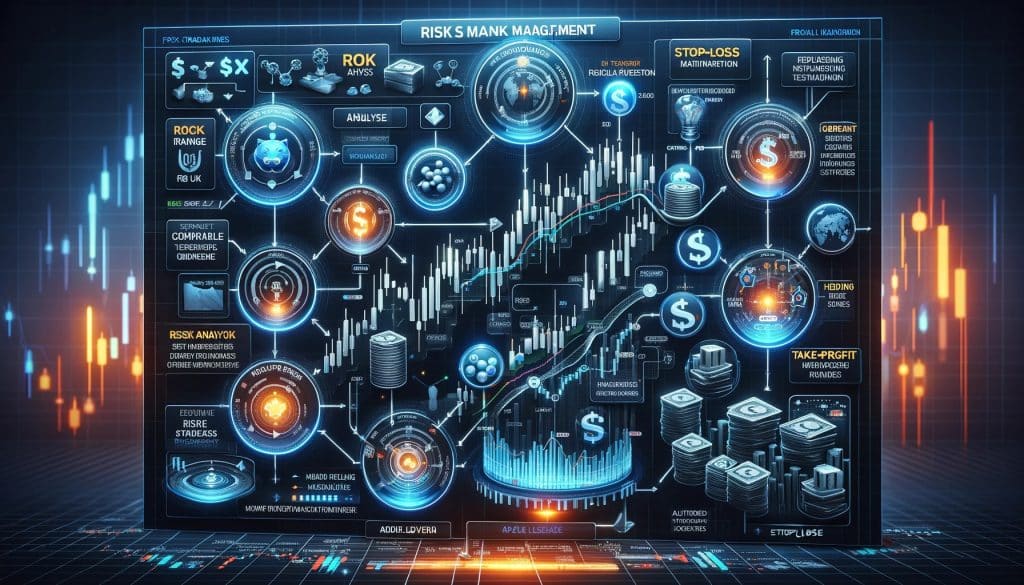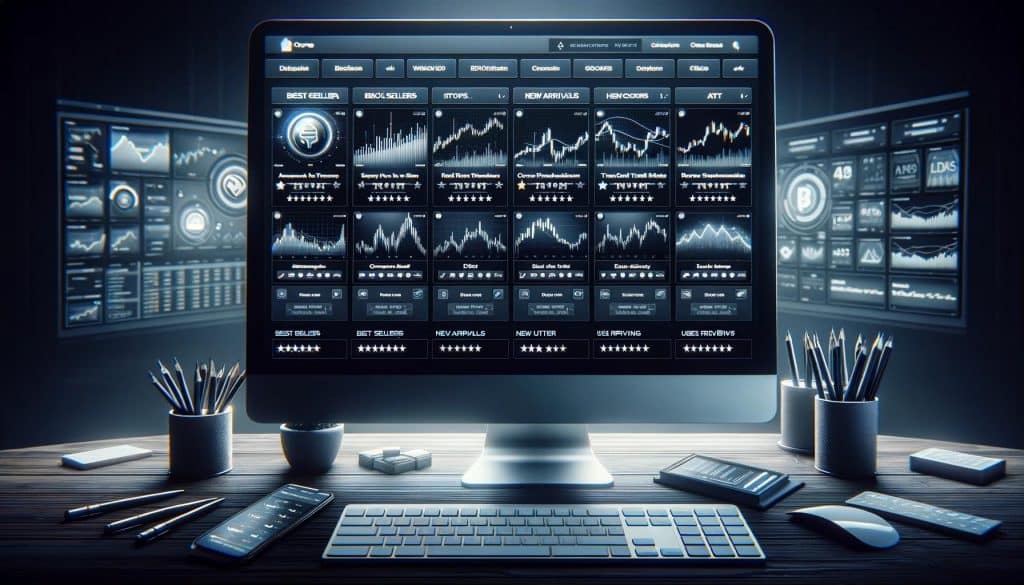In the intricate ecosystem of financial trading, the advent of automated trading systems has revolutionized how traders interact with markets. These systems can execute trades based on algorithms and predefined rules, minimizing the need for constant human intervention. However, the efficiency and profitability of automated trading hinge significantly on effective risk management strategies. This comprehensive guide delves deep into the realm of risk management in automated trading, offering nuanced insights, practical tips, and examples to help traders navigate this complex landscape successfully.
The Foundation of Risk Management in Automated Trading
Risk management in automated trading is the systematic process of identifying, analyzing, and mitigating potential losses in trading activities. It is the backbone of a sustainable trading strategy, ensuring longevity and stability in the volatile world of trading.
Why Risk Management is Non-Negotiable
Automated trading systems, while capable of executing trades with precision and speed, are not immune to the whims of market volatility. A robust risk management strategy is indispensable to safeguard investments from significant losses, ensuring that traders can weather unfavorable market conditions.

Essential Strategies for Risk Management in Automated Trading
Implementing effective risk management strategies is crucial for the success of any automated trading system. These strategies serve as a bulwark against the unpredictable nature of financial markets.
Strategic Use of Stop-Loss and Take-Profit Orders
One of the most fundamental risk management tools is the implementation of stop-loss and take-profit orders. These automated instructions help cap losses and secure profits by automatically closing positions when certain price levels are hit.
Example: Consider an automated trading strategy designed to trade EUR/USD. A trader might set a stop-loss order 20 pips below the purchase price to limit losses and a take-profit order 40 pips above to secure profits, maintaining a 2:1 risk-to-reward ratio.
Implementing Risk Management in Automated Trading: A Step-by-Step Guide
Position sizing is a key aspect of risk management that determines how much capital is allocated to a single trade relative to the total trading capital. Proper position sizing ensures that a loss on a single trade does not significantly impact the overall trading account.
Example: If a trader’s risk management rule is to risk no more than 2% of their total capital on a single trade, and their total capital is $10,000, the maximum amount they should risk on any trade is $200.

Optimizing Risk-to-Reward Ratios
A risk-to-reward ratio is an essential metric that compares the potential loss of a trade to its potential gain. Effective risk management strategies advocate for maintaining a favorable risk-to-reward ratio, ensuring that the potential rewards of a trade justify the risks involved.
Diversification: A Multifaceted Approach
Diversification is a cornerstone of risk management. It involves spreading investments across different assets or strategies to reduce exposure to any single source of risk.
Example: An automated trading portfolio might include strategies for forex, commodities, and indices, ensuring that a loss in one market does not negate gains in another.
Leverage and Its Double-Edged Sword
While leverage can amplify profits in trading, it also increases the risk of substantial losses. Managing leverage wisely is paramount in risk management, requiring traders to strike a balance between maximizing potential returns and mitigating risk exposure.
Continuous Monitoring and Adaptation
Despite the automated nature of these trading systems, continuous monitoring is crucial. It ensures that the system operates within the defined risk parameters and allows for timely adjustments in response to changing market dynamics.

The Pivotal Role of Backtesting
Backtesting is the process of testing a trading strategy against historical market data to ascertain its viability. It is an invaluable tool in risk management, enabling traders to refine their strategies and adjust risk parameters before live deployment.
Case Study: Backtesting a Trend-Following Strategy
Consider a trend-following strategy that enters trades based on moving average crossovers. Backtesting this strategy over a decade of historical data across various market conditions allows traders to adjust stop-loss orders, optimize position sizes, and fine-tune entry and exit criteria to enhance the strategy’s risk-adjusted returns.
Building a Resilient Automated Trading System
A resilient automated trading system incorporates comprehensive risk management rules into its algorithm. These rules are designed to ensure the system adheres to the predefined risk tolerance levels, executing trades in a manner that aligns with the overall risk management strategy.
Integrating Risk Management into Algorithmic Trading Codes
Incorporating risk management directly into the code of automated trading systems allows for real-time risk assessment and management. This integration ensures that each trade executed adheres to the established risk management parameters, automatically adjusting to changes in market conditions or account equity.
Real-World Application: Adapting to Market Crises
The true test of an effective risk management strategy in automated trading comes during market crises. During such times, markets can behave irrationally, and volatility spikes can be drastic.
Example: In response to unexpected market turmoil, such as a geopolitical event, an automated trading system with dynamic risk management can automatically reduce position sizes and tighten stop-loss orders, mitigating potential losses.
Conclusion
Risk management in automated trading is an intricate yet indispensable aspect of successful trading. It requires a well-thought-out plan, continuous monitoring, and the willingness to adapt to changing market conditions. By implementing the strategies discussed, traders can enhance the resilience and profitability of their automated trading systems, paving the way for long-term success in the volatile world of trading. Remember, in trading, the management of risk is as crucial as the pursuit of profit. By prioritizing risk management, traders not only protect their capital but also set the stage for sustainable growth.

FAQs on Risk Management in Automated Trading
What is risk management in automated trading?
Risk management in automated trading refers to the systematic approach to identifying, analyzing, and mitigating potential losses in trading activities. It involves setting predefined rules and parameters within trading algorithms to manage the risk exposure of trading strategies effectively.
Why is risk management crucial in automated trading?
Risk management is crucial in automated trading because it helps protect against significant financial losses, ensures the sustainability of trading strategies, and maximizes the potential for profitability. Automated trading can execute a large volume of trades quickly, which, without proper risk controls, can lead to rapid account depletion.
How can I set effective stop-loss orders in automated trading?
Effective stop-loss orders in automated trading can be set by analyzing historical price movements of the asset, understanding the strategy’s average loss per trade, and considering the volatility of the market. The key is to place stop-loss orders at levels that allow the trade enough room to fluctuate before potentially moving in the desired direction, without risking excessive capital on a single trade.
What role does backtesting play in risk management?
Backtesting plays a critical role in risk management by allowing traders to test their trading strategies against historical market data. This process helps identify how the strategy would have performed under various market conditions, enabling traders to adjust risk parameters, optimize entry and exit points, and improve the overall risk-reward profile of the strategy before implementing it in live trading.
Can diversification reduce risk in automated trading?
Yes, diversification can significantly reduce risk in automated trading. By spreading investments across different financial instruments, markets, or trading strategies, traders can minimize the impact of a poor performance in any single area on their overall trading account. Diversification helps to smooth out returns and reduce the volatility of the portfolio.
How do I manage leverage in automated trading?
Managing leverage in automated trading involves understanding the amount of risk you’re willing to take on and setting leverage levels accordingly. Use leverage conservatively, especially in volatile markets, to avoid magnified losses. Implementing strict risk management rules, such as limiting the percentage of capital risked on each trade, can help control the risks associated with leverage.
Is continuous monitoring necessary for automated trading systems?
Yes, continuous monitoring is essential for automated trading systems, despite their automated nature. Market conditions can change rapidly, and technical issues can arise, making it crucial to monitor the system’s performance and ensure it operates within the set risk parameters. Regular monitoring allows for timely adjustments to the system in response to new market information or unexpected events.
How often should I review and adjust my risk management strategy?
You should review and adjust your risk management strategy regularly, ideally quarterly or bi-annually, and after any significant market events or changes in your trading performance. Continuous improvement and adaptation to new market conditions are key to maintaining an effective risk management strategy in automated trading.





